Keywords, Encyclopdias and Answers….
Do you ever use a search engine to find answers to your gardening questions? I remember the old days, before search engines when I had to drive to my local library and look through gardening books and encyclopedias to find the answers to my non-gardening questions.
Okay, now that I have dated myself by admitting that I used to use encyclopedias, I must say that I am quite addicted to finding information in just a few seconds using search engines.
Many people find my blog by entering a gardening question using a search engine. I am able to see what questions that people type in the search window that leads them to my blog by using an application that tracks my stats.
Some of the searches are humorous while others are totally unrelated to gardening. But, there are often the same type of questions asked. So I thought that I would reveal the three most common questions for this month in hopes that it may help some of you as well.
Question #1:
“Can I prune my Texas Sage shrub when it is in flower?”
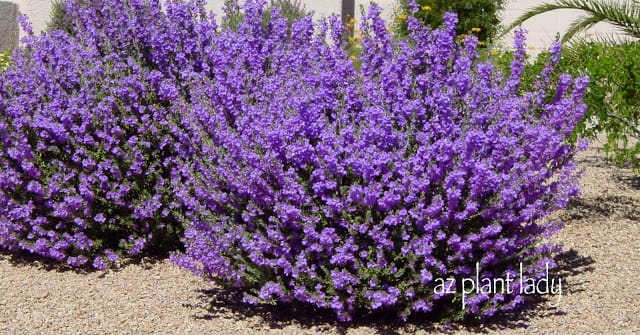
Gardening question #1
Answer:
“You could, but why would you want to remove the beautiful flowers?”
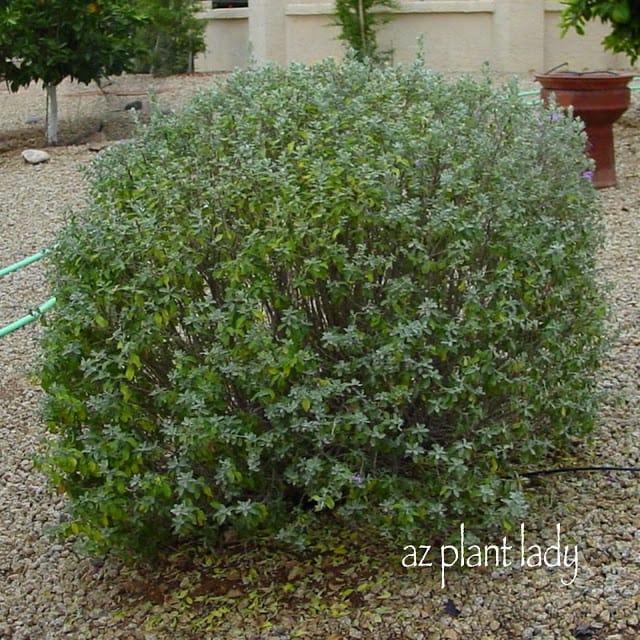
Please don’t participate in the epidemic of pruning shrubs into round shapes. It is not healthy for most desert-adapted shrubs and strips them of much of their beauty.
You can read more about this in an earlier post,
“Shrubs Aren’t Meant to be Cupcakes, Frisbees or Pill Boxes”
Question #2:
“What is the white stuff on my prickly pear cactus and how do I get rid of it?”
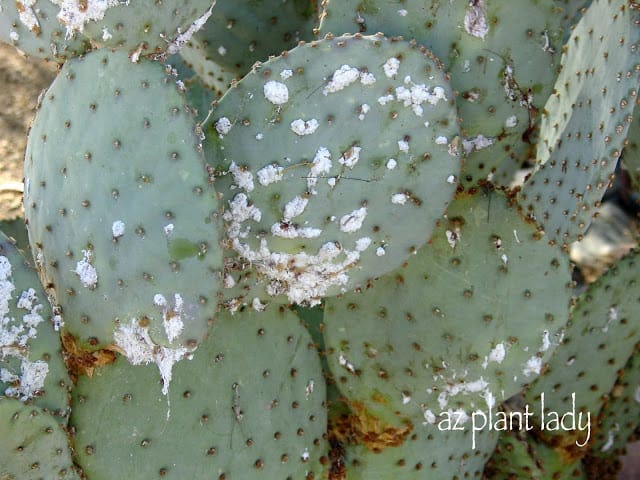
Answer:
Many people assume that it is a fungus. Well, it isn’t. The ‘white stuff’ is actually produced by an insect called cochineal scale. The insects produce the cottony stuff to protect themselves and their eggs while they suck upon the cactus.
The good news is that it is very easy to get rid of it. A strong jet of water from the hose will remove both the insect and the ‘white stuff’.
There are actually some very interesting information about this insect and how native Americans would use them. You can read more from this post “Purple Prickly Pear“.
Question #3:
“What plant smells like rain?”
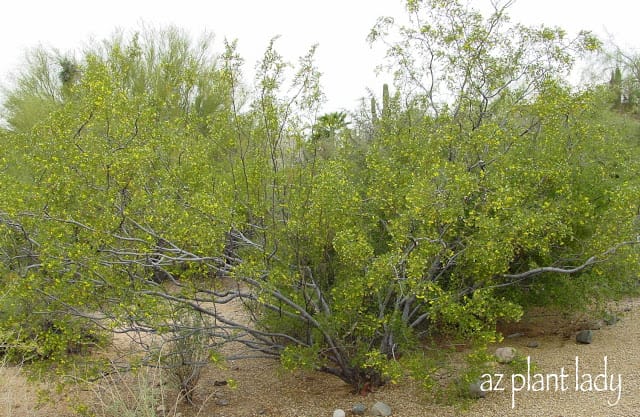
Answer:
Creosote shrubs dot the desert from California to New Mexico. They have small resinous leaves that smell like rain when wet or crushed.
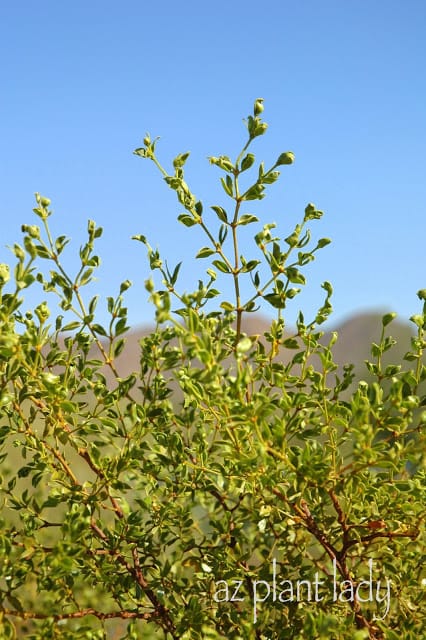
One of my favorite things to do is to take a few leaves, crush them and then have people smell the intense fragrance that smells just like rain.
You can read more about Creosote from this earlier post “A Desert Shrub That Smells Like Rain”.
So, what do you think? I hope this has proved helpful to some of you. I plan on doing more of this in the future.
Now, I have a question for you….
How many of you have used an encylopedia in the past?

 Noelle Johnson, aka, 'AZ Plant Lady' is a author, horticulturist, and landscape consultant who helps people learn how to create, grow, and maintain beautiful desert gardens that thrive in a hot, dry climate. She does this through her consulting services, her online class Desert Gardening 101, and her monthly membership club, Through the Garden Gate. As she likes to tell desert-dwellers, "Gardening in the desert isn't hard, but it is different."
Noelle Johnson, aka, 'AZ Plant Lady' is a author, horticulturist, and landscape consultant who helps people learn how to create, grow, and maintain beautiful desert gardens that thrive in a hot, dry climate. She does this through her consulting services, her online class Desert Gardening 101, and her monthly membership club, Through the Garden Gate. As she likes to tell desert-dwellers, "Gardening in the desert isn't hard, but it is different."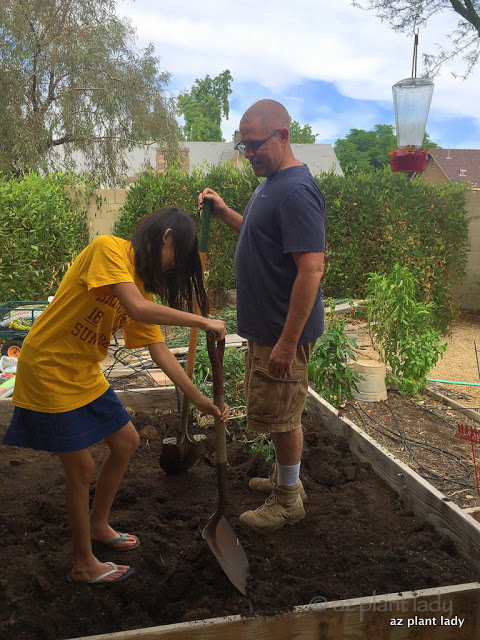
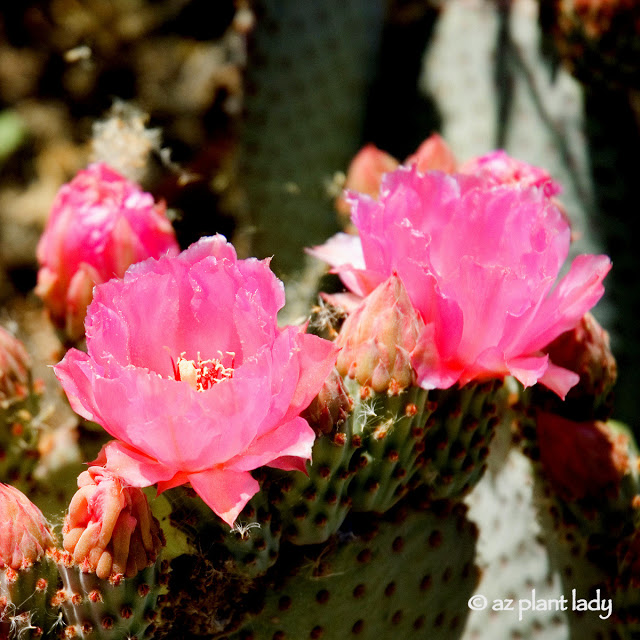
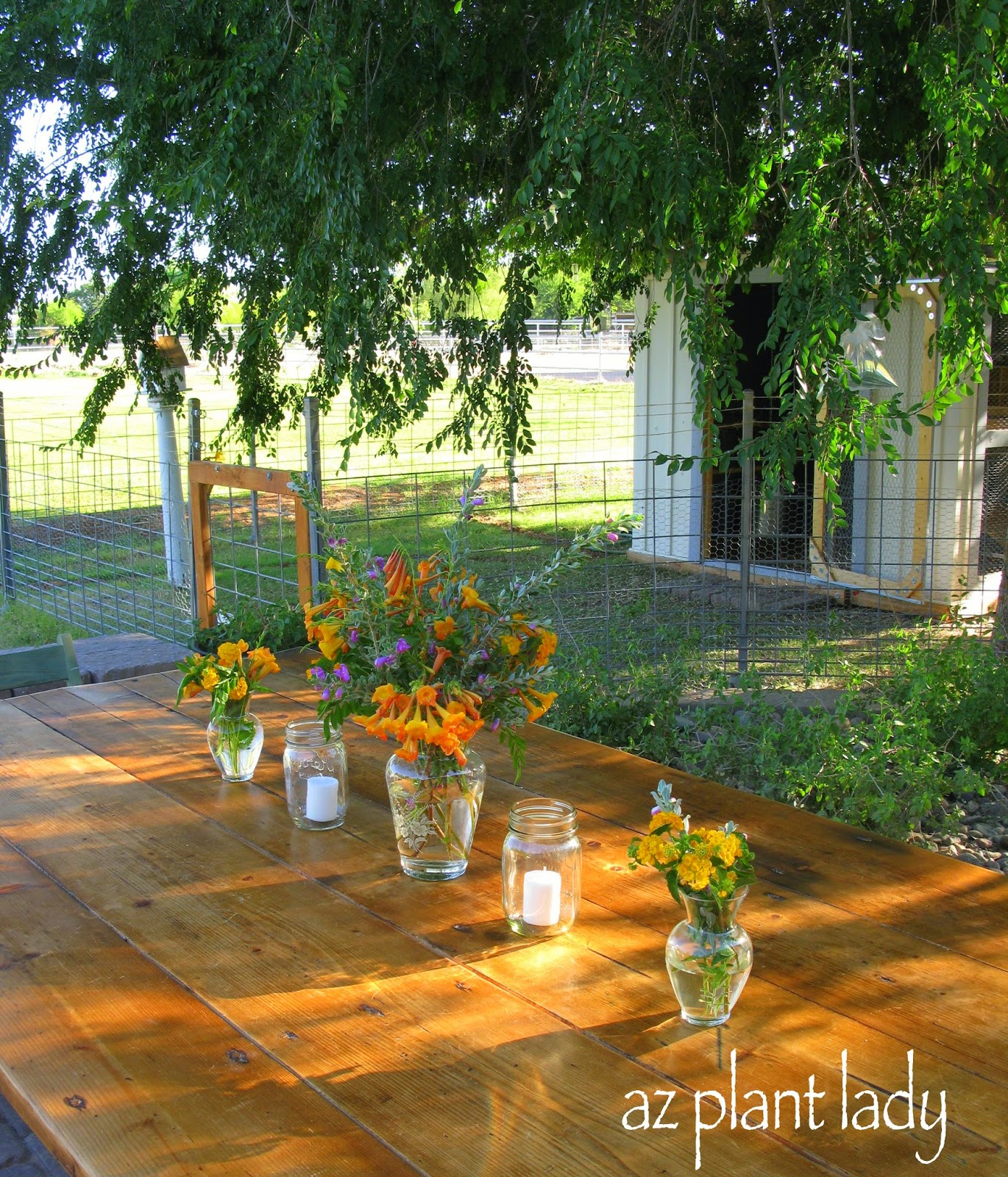
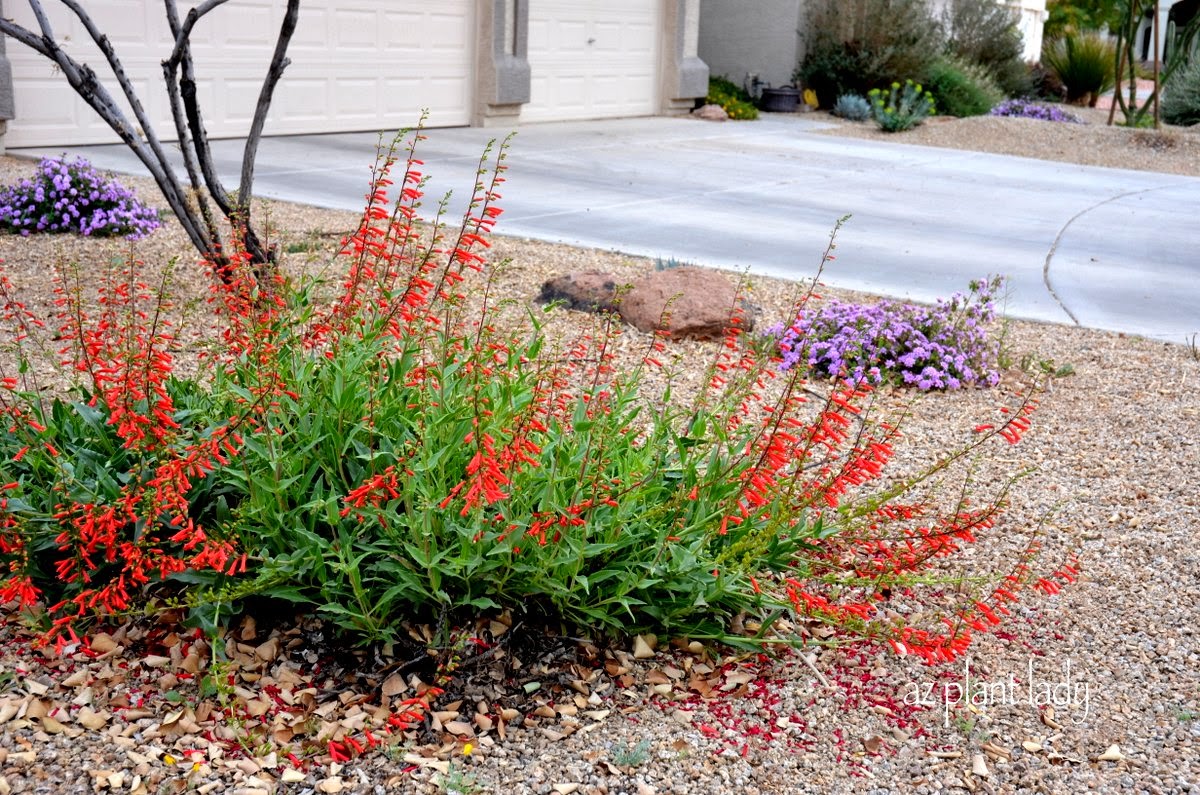
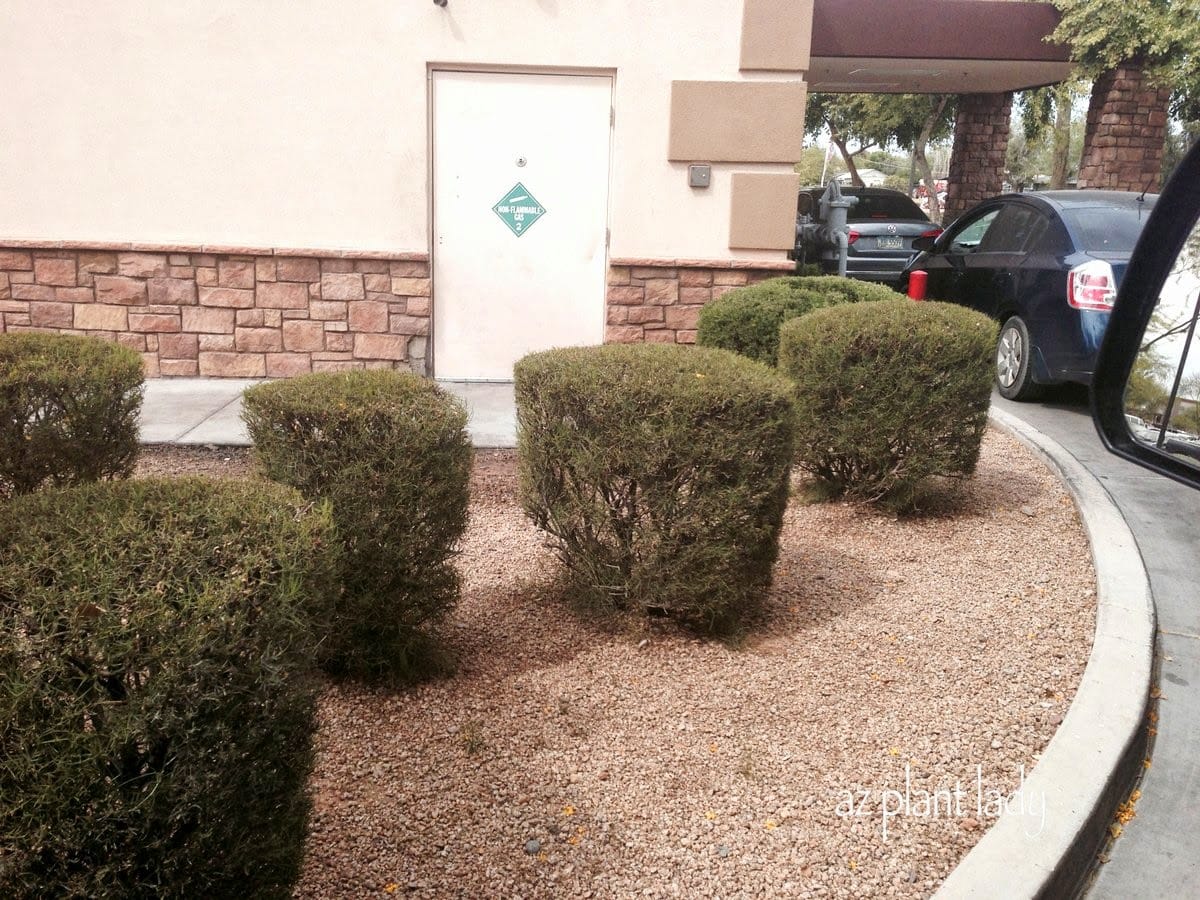
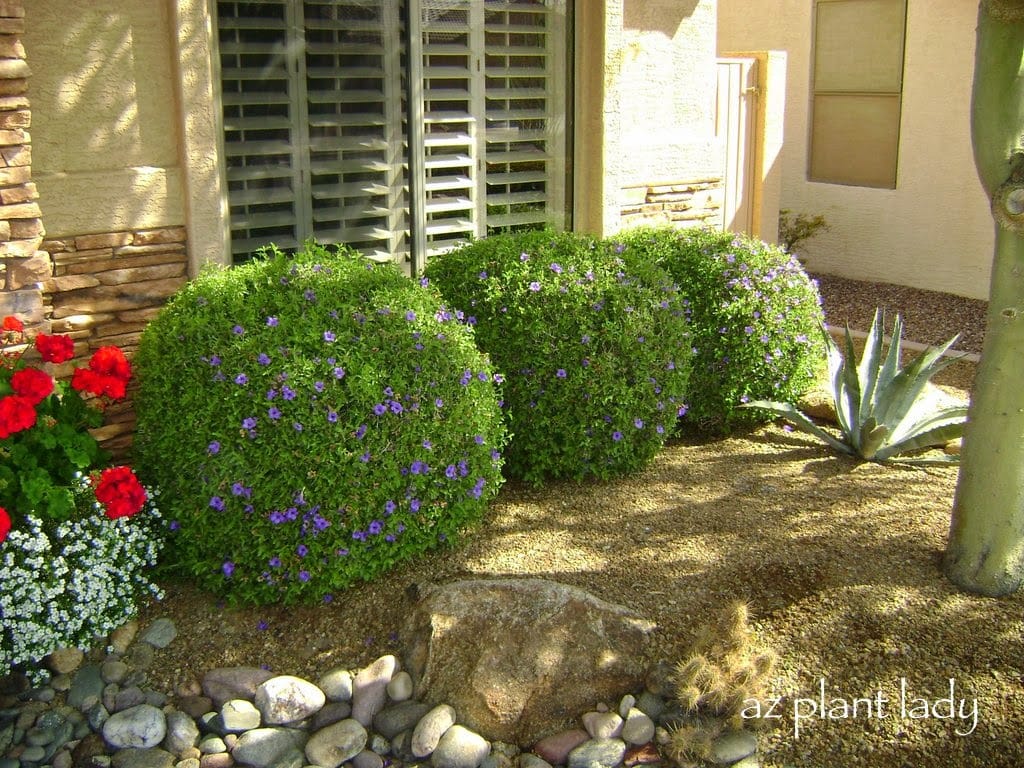








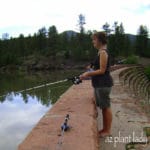
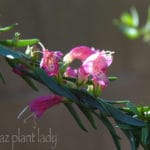
Yes, in years past (many years past) I used encyclopedias. The internet is so convenient. I'll be outside working in the yard and a question will pop into my head about a plant. Next time I go in the house I Google it. I have learned a lot through my searches.
It is really wonderful to be able to search things and get answers so fast.
Love those TX sage in that picture.
FlowerLady
I really enjoy this type of post…yes I have and still do use the reference books and make my children use them from time to time too. It's a skill they need to know how to use. Computers are only as good as the person that programmed it and the internet connection does go down from time to time.
Definitely have used encyclopedias, and many, many searches on the internet … but purchased "Landscape Plants for Dry Regions" which you recommended, and am so glad I did. Many thanks!
Love your first response! I have to get around to getting a Texas sage bush.
I use search engines all the time especially to identify a plant or learn how to propagate it, and especially to learn about the germination methods for different types of seed.
In fact almost all I know about growing plants from seeds and cuttings I learned from the Internet!
Just yesterday I googled "sugar cane propagation" because I got a piece of sugar cane with eyes from a friend and hope to grow some plants from it.
Oh, yes, we have a full set of encyclopedias. We felt they were essential when our children started school. Then along came the internet, which I constantly use, and my encyclopedias are gathering dust. What should I do with them? Sale them? Donate them? Save them for the day they will become oddities of antiquity?
I wrote about the smell of rain Petrichor
And yes I remember, going to a (large) library to consult an encyclopaedia. My mother used to dream of her own copy of Britannica. Now you and I search the internet ;~)
Okay, I agree on not trimming into a ball; but how do I trim when they grow beyond the space they are in? I have rosemary in a planter by a fountain and it is huge – can I cut branches from the bottom?
Encyclopedia user of the past, checking in. 🙂 I still like to look for a little information when I'm at the library… But, I'm now a confirmed internet searcher!
Hi Bonnie,
Thank you for your question. For now, I would just hand prune the parts of your shrub that are outgrowing their space. In March/April, I would severely prune back your shrubs to 1 – 2 ft. This stimulates younger, healthier growth and helps to keep your plants within bounds. Of course, sickly plants often do not recover from this type of pruning, but would not have lasted long either way.
I hope this helps 🙂
Noelle
Noelle, this is both an informative and amusing post. I think most of us blogger gardeners are ex-encyclopedia users, in fact i am envious with students today unlike us when we all used many hours in the library reading the very small font of scientific journals. haha. It is very ingenuous of you to have tracked the questions leading to your site, amazing. And i am amazed also that rain has an associated smell there, here that of course is not true because we dont have those trees. I love this post indeed!
Very interested in reading your note on the Cochineal scale as in Australia we all learnt in school how the Cochineal scale sved much or Australia being overrun by the introduced Prickly Pear. Feral plants are a problem where ever the're introduced as I note the problem some Australian Natives have presented in some areas or USA
I'm in my 70's, so I have definitely used an encyclopedia. I remember when we got our first set. We lived in a small development, after the war,and that was one of the first things my Mom and Dad bought. I remember the truck bringing the books and all the neighbor kids gathered round to look at them.
My middle name is Google now 🙂
Balisha
Noelle, LOL, I'm way older than you are, so I'm definitely a member of the encyclopedia generation. (I even remember the song for spelling encyclopedia!) A multi-volume encyclopedia held pride of place in the living room bookcase when I was a child, and the answer to almost any question was to be sent to look it up in the encyclopedia. I still remember the excitement with which I purchased the 20-volume Encyclopedia Brittanica as a young married woman. Looking stuff up online is convenient, but it doesn't have the same excitement or the thrill of just getting lost in a chapter and learning about something totally new that a print encyclopedia provides. -Jean
I love your blog! I am new to gardening and gets lots of info from you.I have a question I hope you can answer. I bought carpet roses yesterday — they say full sun. Am I crazy to think they will survive in the AZ summer in full sun? They will have to be potted and on the patio if not, since I have almost no shade trees big enough yet. Thanks for your wonderful blog!
Kelly
Hello Kelly,
Carpet roses are beautiful, but they would do best in an area where they receive afternoon shade in the Arizona desert. Depending on where you plant them, you can give them temporary shade until your trees grow larger by simply placing a plastic patio chair so that it shades your roses in the afternoon in summer. Roses can easily handle full sun during the cooler months of the year.
I hope this helps 🙂